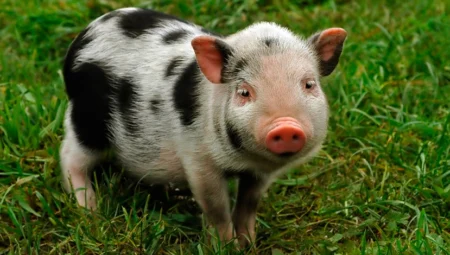For people who are prone to allergies, owning a pet can be a challenge due to potential allergic reactions from pet dander, saliva, or urine. However, some pets are considered hypoallergenic, meaning they are less likely to cause allergic reactions in susceptible individuals. While no pet is completely allergen-free, certain breeds and species are known to produce fewer allergens, making them more suitable for people with allergies.
Choosing Allergy-Friendly Companions
Here’s an overview of hypoallergenic pets and considerations for choosing allergy-friendly companions:
Types of hypoallergenic pets:
Dogs: Some breeds of dogs are considered hypoallergenic because of their minimal shedding and low dander production. Examples include poodles, bichon frises, Portuguese water dogs, and some terrier breeds.
Cats: Certain breeds of cats are considered hypoallergenic due to their low shedding and reduced production of allergenic proteins. Breeds such as Siberian, Balinese, and Russian Blue are often considered better choices for allergy sufferers.
Small mammals: Pets such as certain rodents (e.g., guinea pigs) and rabbits may produce fewer allergens than cats or dogs, but individual reactions may still vary.
Factors affecting allergies:
While some breeds are considered hypoallergenic, individual allergic reactions can vary. Factors such as the specific protein an individual is allergic to, the amount of exposure, and the individual’s sensitivity play an important role.
Regular grooming and proper pet hygiene practices can help reduce the spread of allergens. Frequent bathing and grooming can minimize dander and other allergens on the pet’s coat.
Choose a hypoallergenic pet:
Research breeds known to be hypoallergenic and spend time with individual animals to assess potential allergic reactions before making a decision.
Consider consulting an allergist or visiting breeders who specialize in hypoallergenic breeds to better understand which pets may be more suitable based on personal allergy profiles.
Managing allergies with pets:
Even with hypoallergenic pets, it’s important to create an allergy-friendly environment. Regular cleaning, the use of HEPA air filters, and good ventilation can help reduce indoor allergens.
Washing hands after handling pets and avoiding close contact with pets in areas where allergens may accumulate can also reduce allergic reactions.
Hypoallergenic pets can provide companionship for people with allergies, but there is no guarantee that they won’t cause allergic reactions. Choosing a pet requires careful consideration of individual allergies, breed characteristics, and the management of allergens in the home.
In conclusion, while hypoallergenic pets may be a suitable option for allergy sufferers, it’s crucial to understand that no pet is entirely allergen-free. Taking proactive measures to reduce exposure to allergens and considering individual sensitivities are essential steps in choosing an allergy-friendly pet that can bring joy and companionship while minimizing allergic reactions.

What does hypoallergenic mean?
“Hypoallergenic” refers to substances or products that are less likely to cause allergic reactions in people who are prone to allergies. When applied to pets, the term hypoallergenic suggests that certain breeds or species are less likely to cause allergic reactions in people with pet allergies. This could be due to lower production of allergenic proteins, reduced dander production, or other factors that minimize the spread of allergens associated with these pets. However, it’s important to note that no pet is completely allergen-free, and individual reactions may vary based on a person’s specific allergies and sensitivities.




